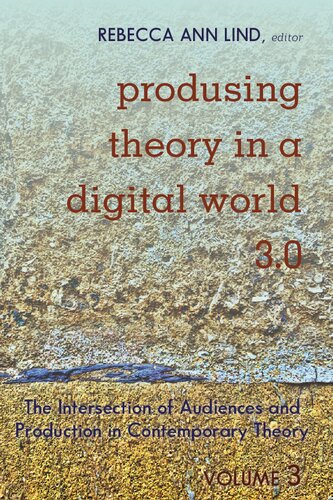

Most ebook files are in PDF format, so you can easily read them using various software such as Foxit Reader or directly on the Google Chrome browser.
Some ebook files are released by publishers in other formats such as .awz, .mobi, .epub, .fb2, etc. You may need to install specific software to read these formats on mobile/PC, such as Calibre.
Please read the tutorial at this link: https://ebookbell.com/faq
We offer FREE conversion to the popular formats you request; however, this may take some time. Therefore, right after payment, please email us, and we will try to provide the service as quickly as possible.
For some exceptional file formats or broken links (if any), please refrain from opening any disputes. Instead, email us first, and we will try to assist within a maximum of 6 hours.
EbookBell Team

4.1
60 reviewsContinuing the explorations begun in the first two Produsing Theory volumes, this book investigates some of the tensions generated in the spaces enabled by the confluence of the formerly disparate activities of producing and consuming media. Multiple and varied theories―some still emerging―are invoked in attempts to illuminate the spaces between what previously had been neatly-separated components of media systems. This book is useful in a number of courses such as media culture and theory, introduction to new media, the Internet and the audience, new media theory and research, mass communication theory, emerging media, critical analysis and new media, concepts of new media, new media participants, new media in a democratic society, critical studies in new media, new media and social media, digital media studies, participatory media, media audiences in a digital world, digital cultures and social media, Web culture and new media studies, introduction to new media, new media and society, and more.